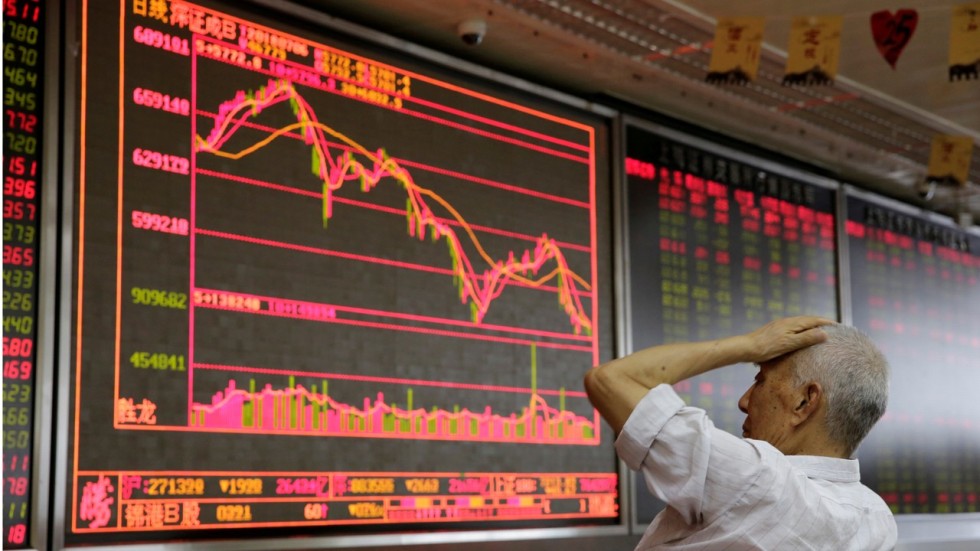The S&P BSE Sensex plunged 966 points in just five trading session to close at 33,349 for the week ended October 26. For the month, the index has fallen about 8 percent or 2,878 points.
Similarly, Nifty has fallen 273 points or 2.65 percent for the week ended October 26 and for the month, the index has plunged 8.2 percent.
Both local and global factors led to sharp sell-off on D-Street. Mixed earnings from India Inc and selling by foreign investors who have taken out more than Rs 22,000 crore from Indian equity markets have contributed to the sell-off. Besides, rise in crude oil prices, liquidity concerns in NBFC stocks and rupee fall too weighed in on investors' minds.
The carnage on the D-Street for the month of October can be easily called as the worst since October 2008. The index saw a massive 25 percent fall in the month in 2008, a year later it fell 7 percent, and 2 percent in October 2010.
Markets had witnessed one of the worst October performances on a barrage of negative headwinds both locally and internationally. Historically, the month of October is considered to be the worst for bulls.
Some of the biggest crashes in the past century have occurred in October. October 2008, October 1987 and October 1929 have all seen a major crack in prices not only in India but across the world. Hopefully, now the October omen is behind us and November Diwali could bring back some cheer to the market.
A large part of the carnage was in small and mid-caps which slipped in double digits in a matter of days. As many as 37 stocks in the S&P BSE 500 index slipped 10-40% in just 5 trading sessions, including Infibeam Avenues, 8K Miles, Kwality, Ujjivan Financial, Equitas Holdings, Yes Bank, Jubilant FoodWorks and Zensar Technologies.
In the S&P BSE Mid-cap index, as many as 4 stocks slipped 10-13 percent for the week ended October 26 which include names like Dewan Housing Finance, Kansai Nerolac, 3M India, and Bayer CropScience.
In small-caps more than 90 stocks witnessed a 10-30 percent fall including Bhansali Engineering Polymers, 8K Miles, Arcotech, IVRCL, Jubilant FoosWorks, Zensar Technologies, JBF Industries, Navkar Corporation, Sasken Technologies, DB Realty, Hexaware Technologies, and Prabhat Dairy Ltd etc.
Short Covering On Cards?
Earnings and macro data will dictate the trend for markets in the coming week. The rollover data indicates higher rolls in terms of percentage and also in term of Open Interest for Nifty.
The index had a rollover of around 76 percent for November series in comparison to its three months average of 68 percent, data showed. On a month-on-month basis, the open interest has increased by 28.34 percent.
The rollover data indicates higher rolls in terms of percentage and also in term of Open Interest for Nifty. During the series, shorts build up was seen by the FIIs in the index futures and with higher rollover percentage we can safely assume that the shorts were rolled this time too, suggest experts.
With so much of pessimism in the market, some bit of bounce back cannot be ruled out, suggest experts. If the Nifty holds on to 10,000 levels, there is a higher chance of a technical bounce which will boost sentiment for investors in the Diwali month.
"The distressing October series ended on a pessimistic note during the previous session. The FII derivate statistics show their Long to Short ratio has dropped to 29 percent which was last seen in the month of April 2018. The only hopeful point here is that since they have heavy shorts in the coming series chances are high that there could be a short covering in case of any positive triggers (This happened in April 2018 where the markets made bottom)."We feel that the sellers are getting exhausted while the chances of a sharp recovery during the coming series are quiet high. A move below 9950 shall negate the view and lead to another round of selling," he said.
Technical Setup:
The index formed a large bearish candle which resembles a 'Bearish Belt Hold' kind of pattern on the daily chats as well as on a weekly scale on Friday. The trend is still on the downside; however, the possibility of a short covering cannot be ruled out.
The index failed to surpass previous support of 10,138 on Friday and corrected towards 10,000 zones intraday by making fresh seven-month low levels which indicates that there could be a possibility of further breakdown which could take the index towards March lows of 9,950 levels in coming sessions.
Technically, we are seeing a continuation of the previous bearish trend. This is the third straight week of losses for the index. If the index breaks below 10,000, the next crucial support will be placed around 9900, suggest experts.
The Nifty has its next support placed at 9950 while a breach of this would open the floodgates for 9650 – 9700. Any rebound, for now, may be utilized while only a close above 10200 will call for any buying that too maybe not as strong as previously were seen at these levels in March 2018.
“On the macro front, Manufacturing PMI and Infrastructure output numbers are ahead and will be seen crucially while the leads will also be taken from ICICI bank's result. Mostly the trend will be in tandem with the global markets and indices such as S&P500.
MORE WILL UPDATE SOON!!






 “On the domestic front, the investors will take cues from the upcoming state elections. With changes in market sentiments and macros we feel volatility in the markets may persist,” said Hemang Jani.
“On the domestic front, the investors will take cues from the upcoming state elections. With changes in market sentiments and macros we feel volatility in the markets may persist,” said Hemang Jani.